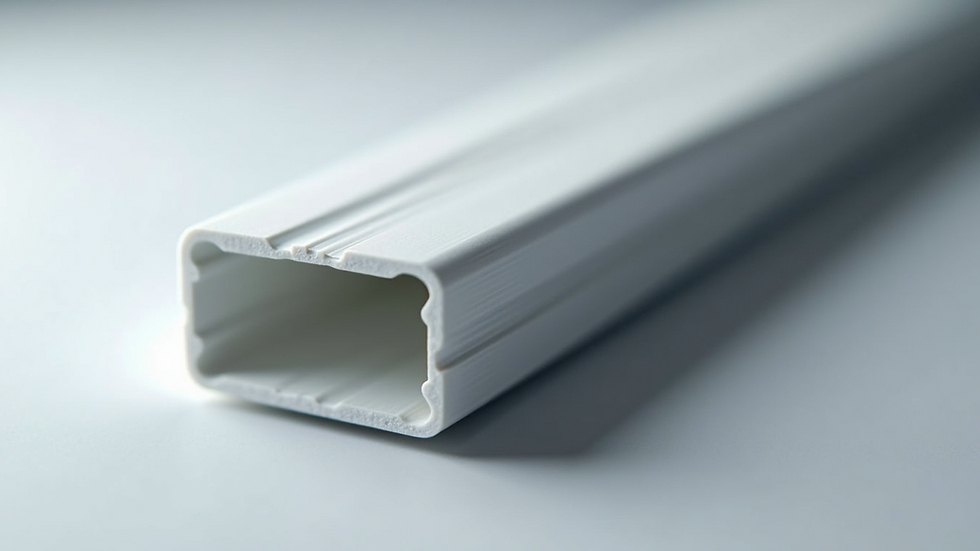Maximizing Aluminium Profile Success: The Power of Plastic Prototyping Before Finalizing Wirecut Dies at Rameshwar Manufacturing Solutions
- MapLeo Design
- Aug 1
- 3 min read
In today’s manufacturing landscape, achieving high precision and efficiency is essential, especially for aluminium profiles. Imagine being able to test and optimize your designs without the costly implications of final production. That’s where plastic prototyping comes in—a game-changing method that helps manufacturers like Rameshwar Manufacturing Solutions confirm part feasibility before diving into the creation of wirecut dies. This early step not only saves time and money but also ensures successful outcomes.
The Importance of Part Feasibility
Checking the feasibility of a design before manufacturing is vital to avoid pitfalls. Each aluminium profile design comes with its unique set of challenges, especially considering that these profiles are commonly employed in industries ranging from construction to automotive. A survey by IndustryWeek indicated that poor design choices are a leading cause of manufacturing delays, accounting for as much as 20% of project timelines.
Evaluating the feasibility before producing a wirecut die has tangible benefits. Issues related to material flow or structural integrity can be spotted early in the process, allowing adjustments before they snowball into costly mistakes. By addressing these concerns proactively, manufacturers can significantly streamline operations and minimize waste, leading to a more efficient production process.
What is Plastic Prototyping?
Plastic prototyping is a practical method for creating a physical model of a component prior to full-scale production. It enables manufacturers to visualize, test, and iterate designs effectively. Rameshwar Manufacturing Solutions utilizes advanced 3D printing technology to produce prototypes that closely mirror the intended aluminium profile.
The benefits of plastic prototyping are numerous. It allows for rapid design iterations, ensuring critical features are both functional and fit for purpose. For instance, by quickly creating a prototype, a team can discover that a design modification improves the profile's load-bearing capacity by 15%, avoiding complications later on in production.

Steps to Check Feasibility Using Plastic Prototyping
1. Initial Design Review
The feasibility check kicks off with a comprehensive review of the initial design. Engineers and designers work together to evaluate dimensions, tolerances, and potential manufacturing hurdles. This collaborative effort ensures that the functional requirements are well understood before moving forward.
2. Creation of a Plastic Prototype
Following the design review, creating a plastic prototype is the next crucial step. This model doesn't have to be an exact replica but should capture the essential features of the intended aluminium profile. Using 3D printing, Rameshwar Manufacturing Solutions generates prototypes that closely align with design specifications and are ready for practical testing.
3. Testing the Prototype
Testing can make or break the design process. Subjecting the plastic prototype to various examinations—such as functionality evaluations, stress tests, and assembly checks—yields invaluable insights. According to an MIT study, companies that conduct thorough prototype testing experience a 30% reduction in late-stage redesigns, showcasing the effectiveness of this step.
4. Iterative Design Improvements
Based on the feedback from testing, adjustments can be made to the design. This iterative process allows engineers to enhance both the performance and manufacturability of the aluminium profile quickly. Making changes to a prototype is significantly cheaper and less time-consuming than altering a wirecut die post-production.
5. Final Evaluation and Production
Once the design has been refined through testing and iterations, it is set for wirecut die production. The confidence gained from the prototyping phase ensures that the die will adhere to the desired specifications, minimizing the risks of production errors and delays.
Advantages of Plastic Prototyping at Rameshwar Manufacturing Solutions
The advantages of utilizing plastic prototyping before wirecut die production are extensive:
Cost-Effectiveness: By identifying design shortcomings early on, businesses can save substantial amounts. For example, fixing a prototype can save manufacturers up to 50% compared to making changes to a completed die.
Time Efficiency: Streamlining the design process translates into quicker project turnarounds. With rapid iterations through prototyping, time from concept to production can be reduced by up to 40%.
Enhanced Collaboration: A tangible prototype aids in clear communication among team members and stakeholders. It acts as a visual reference, aligning everyone's understanding and expectations.
Risk Mitigation: By confirming the feasibility of a design beforehand, manufacturers can significantly lower the chances of operational failures during the extrusion process.

Wrapping Up
The integration of plastic prototyping into the aluminium profile manufacturing process is a critical strategy at Rameshwar Manufacturing Solutions. By leveraging this innovative technique, manufacturers ensure that their designs are not just feasible but optimized for production. The benefits—ranging from cost savings to enhanced collaboration—position plastic prototyping as an essential tool in the competitive manufacturing industry.
Investing in early feasibility assessments through plastic prototyping empowers manufacturers to unlock the full potential of their aluminium profiles. This strategic decision can lead to superior products, increased customer satisfaction, and a stronger foothold in the market. As the manufacturing sector continues to evolve, the power of prototyping emerges as a key element in driving successful production strategies.


Comments